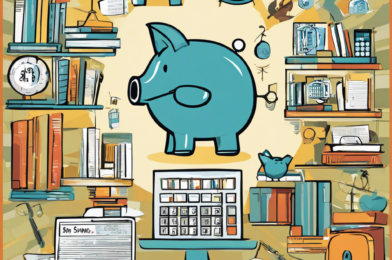Are you tired of feeling anxious about your finances and struggling to save money? It’s time to take control and automate your savings! Reaching your financial goals doesn’t have to be a daunting task. With a few simple steps, you can set up a system that effortlessly puts your money to work for you. Let’s explore some strategies to make saving a breeze and help you achieve your dreams.
The first step towards automating your savings is to set clear financial goals. Are you saving for a down payment on a house, planning a dream vacation, or aiming to build an emergency fund? Define your goals and break them down into smaller, achievable milestones. For instance, if you want to save $10,000 in two years, that’s approximately $416 per month. Setting specific targets makes it easier to create a savings plan.
Next, open a dedicated savings account separate from your everyday checking account. Many banks offer high-yield savings accounts that accrue interest at a higher rate. This simple step will help you earn more on your savings and keep your funds accessible when needed. Shop around for the best interest rates and consider online banks, which often provide more competitive offers. Ensure that transferring funds between your checking and savings accounts is easy and free.
Now it’s time to make automation work for you. Set up automatic transfers from your checking account to your savings account. Most banks allow you to schedule regular transfers, whether weekly, bi-weekly, or monthly. Align these transfers with your pay schedule to ensure you consistently save. For example, if you get paid every two weeks, set up a bi-weekly transfer of a set amount. This way, you save effortlessly without constantly thinking about it.
Consider using budgeting apps or personal finance software to streamline your savings journey. These tools can help you track your spending, create budgets, and monitor your progress towards your financial goals. They often provide features like expense categorization and alerts when you’re close to overspending in a particular area. Some popular options include Mint, YNAB (You Need a Budget), and Personal Capital, which offer different levels of automation and customization.
Another effective strategy is to increase your savings gradually. Start with an amount you’re comfortable with and aim to save a little more each month. For instance, if you’re currently saving $100 per month, try increasing it to $120 next month. Over time, you’ll be surprised by how much your savings grow without significantly impacting your daily life.
Automating your savings is an excellent way to stay on track with your financial goals. By setting clear objectives, opening a dedicated savings account, and utilizing automation tools, you’ll be well on your way to financial success. Remember, small changes and consistent efforts can lead to significant results. Start automating your savings today and watch your financial dreams become a reality!





